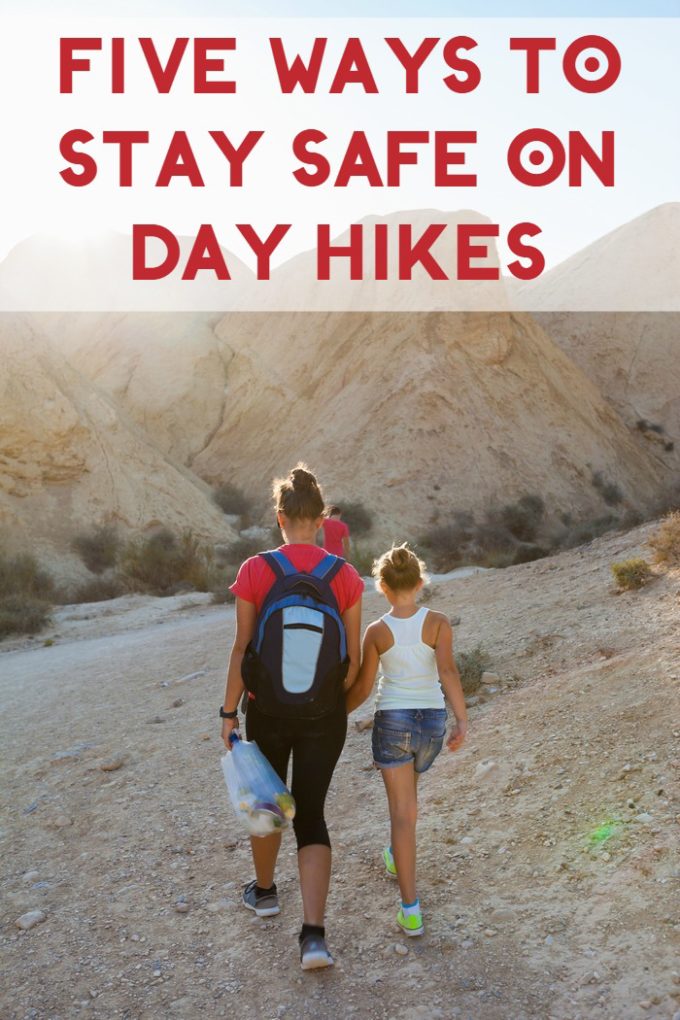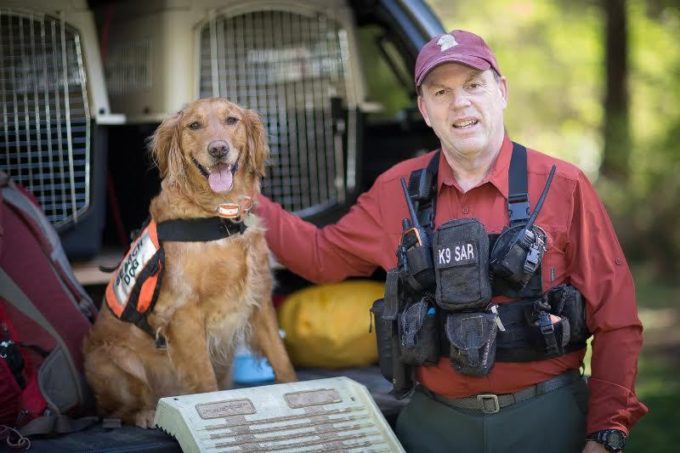Ever since I was a kid, hiking has been one of my favorite outdoor activities. I don’t get to do as much of it as I want to because of back problems, but I’m really trying to get back into it this summer. I’ll stick to short local hikes and try to work my way up to longer day hikes. When I do go out, I want to be prepared.
Once, many years ago when I was a teenager, I set out on a hike with a couple of friends through woods I thought I knew. We took nothing with us. Not even water! We thought we were only going to be gone for an hour at the most. We ended up getting lost and spending four hours wandering around in the blazing heat with nothing to drink. I was pretty lucky. A few hours of thirst is nothing compared to what else can happen if you head out for a day hike unprepared.
My special guest writer today will tell you all about what you need to stay safe on day hikes. He’s an expert with years of Search and Rescue experience, and the author of a new series of books. Let’s check out his advice.
Five Ways to Stay Safe on Day Hikes
K9 Handler and author of the Sierra the Search Dog spectrum of books for children and adults
Headed out for a day hike with the kids? You should note the plight of a California man who thought he was prepared. Map? Check. Compass? Check. GPS? Check and double check. What more could he possibly need to return safely to his car by nightfall?
Except (and there’s always an except) all those tools were apps on his smart phone. He spent three days wandering in the woods when his phone’s battery went deader than a possum on a country road. Searchers eventually found him alive, thankfully, but the outcome could have been tragic.
As the human half of a K9 search-and-rescue team I’m frequently stopped by other hikers. “Is someone missing?” “Can we help look?” I always provide a description of the missing person and let these Good Samaritans know where to call if they make contact. But I generally have to bite my tongue about another issue.
The people I meet who are headed into the woods and sincerely want to help are generally less well equipped than the person who’s already missing. I can drop hints about steep cliffs, rugged trails and confusing terrain. They still head out with just a jacket tied around their waist and a cup o’ Starbucks in their hand.
Nobody expects you to become a survivalist for a two-hour hike with the kids. But there are some things you can do to make sure your next day hike doesn’t turn into an overnighter- especially if you’re taking the kids. Here are five of them:
- Carry the Ten Essentials as recommended by the Mountaineers Society. They’re not expensive, and you don’t need to buy the large economy size version of any item. A simple disposable poncho can be your “extra clothing,” and small LED flashlights are lightweight and cheap. For food, buy a power/energy/protein/granola bar that absolutely gags you. That way you won’t eat it until things are really bad. (Oreos would last about 10 minutes as my “emergency food.”)
- Don’t rely on your smart phone as a map, GPS or compass. Invest in a decent compass ($35) and learn how to use it. Most hiking areas now have printable maps online. The batteries will never go dead in a real compass, nor in the paper map you’ve wisely brought inside a plastic bag.
- As you hike, turn around every few minutes and enjoy the scenery behind you. You might see something breathtaking that wasn’t noticeable before. Turning around also helps you know what the trail should look like on the way back. If think you’re returning but don’t recognize anything, maybe you’ve taken a wrong turn.
- Use the paper map you brought to develop a backup plan- before you leave the parking lot. “If I use my compass to walk in this direction, I will eventually hit a road even if I have to go cross country.” The time to develop an emergency plan is before you’re panicked, confused and embarrassed about being lost. You’ll enjoy your hike more knowing you have a backup plan.
- If you even think you might be lost, stop. Tie a scarf, ribbon or brightly-colored piece of clothing to the highest branch you can reach. Then make little forays out in all four directions. If you don’t find the trail or a recognizable landmark, return to the scarf, hunker down and wait for SAR.
One of my goals as an author, besides giving people a few hours away from their problems, was to raise some awareness about missing people and how search-and-rescue works. The Sierra the Search Dog spectrum of books includes age-appropriate stories for both children and adults.
Sierra Becomes a Search Dog is about a little puppy who’s good at hide and seek. She turns that into a life-saving act when a neighbor girl goes missing in some nearby woods.
In Sierra the Search Dog Finds Fred, a more mature Sierra uses Fred’s stinky ol’ shoe as a scent article, to track down the missing man. Does your kid giggle about stinky shoes like mine did? In Fred’s case, we’re talking clouds of stink.
Finally, Digger—Sierra and the Case of the Chimera Killer is a full on murder mystery for teens and adults. Sierra and her human handler Bryce are one step behind whoever is dumping bodies around Kitsap County, Washington, and one step ahead of the police. Bryce risks his SAR career and eventually his life cracking the case.
For more about the life of a search dog handler you can find me at:
- www.robertdcalkins.com
- https://www.facebook.com/sierrasearchdog/ (Post questions! I’ll answer them.)
- www.twitter.com/k9sierra
And you can check out my books on Amazon.
Have you ever had a scary experience on a day hike? Do you have any questions for Robert? Share in the comments below.






These are actully some amazing tips . Fortunately never had a bad experience!
Great advice, hiking is such fun but can be dangerous too. Foloowing this kind of advice is crucial. The Sierra books sound great.
Hikes can be quite dangerous especially when you’re going alone. These safety tips are very useful! Thanks for sharing them!
Thank you for taking the time to provide us with your valuable information. We strive to provide our candidates with excellent care and we take your comments to heart.As always, we appreciate your confidence and trust in us.
These are absolutely great tips, I always afraid doing the hiking
When we were kids we would hike through the woods often, so we got in the habit of going further and further. I remember one time when we were lost and had no idea where we were, or what to do. My sister climbed a tree and started hollering for help. I don’t remember how we found our way out, but I still remember being really scared.
I hike all the time with my husband and didn’t know a couple of these facts! Thanks for sharing!